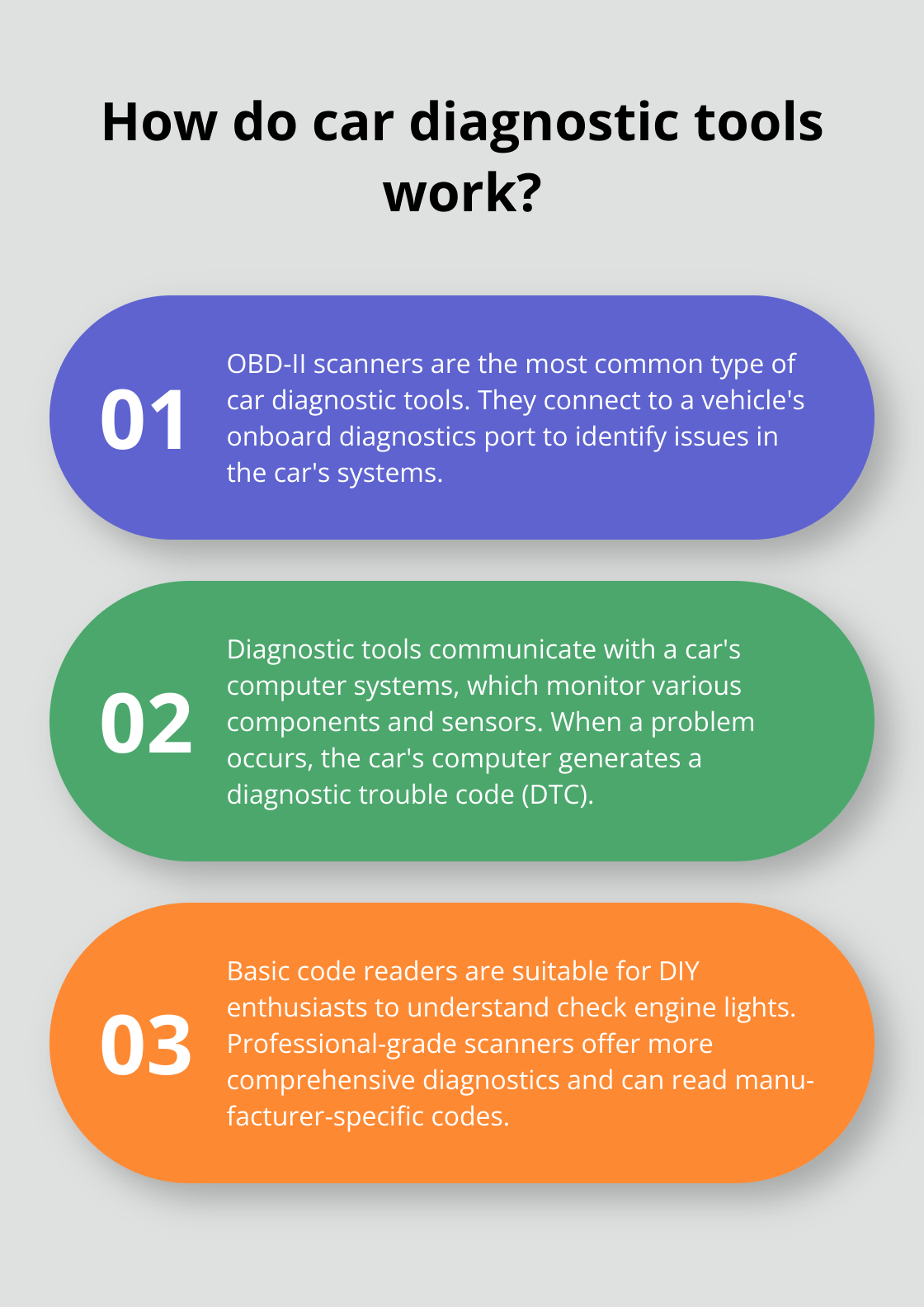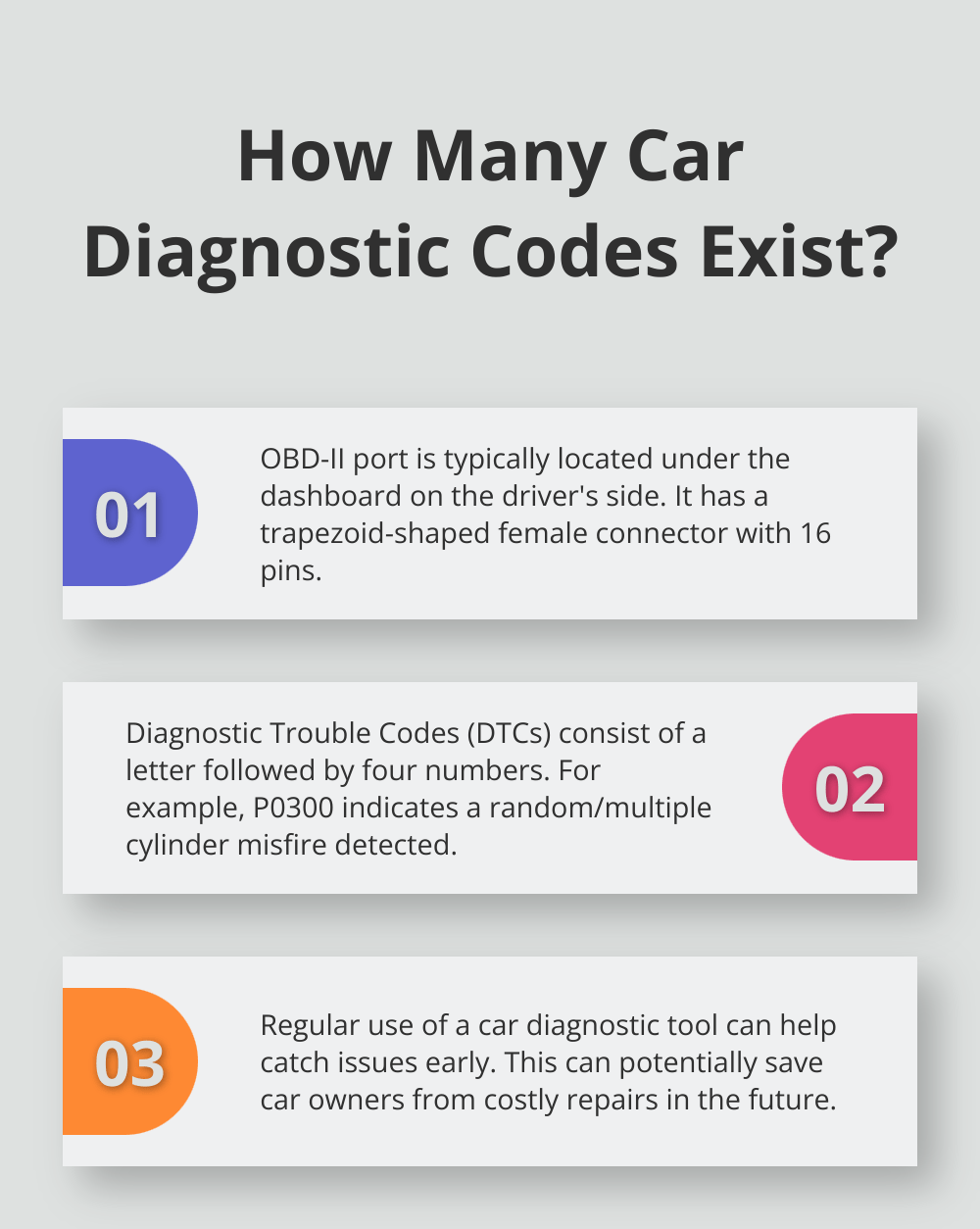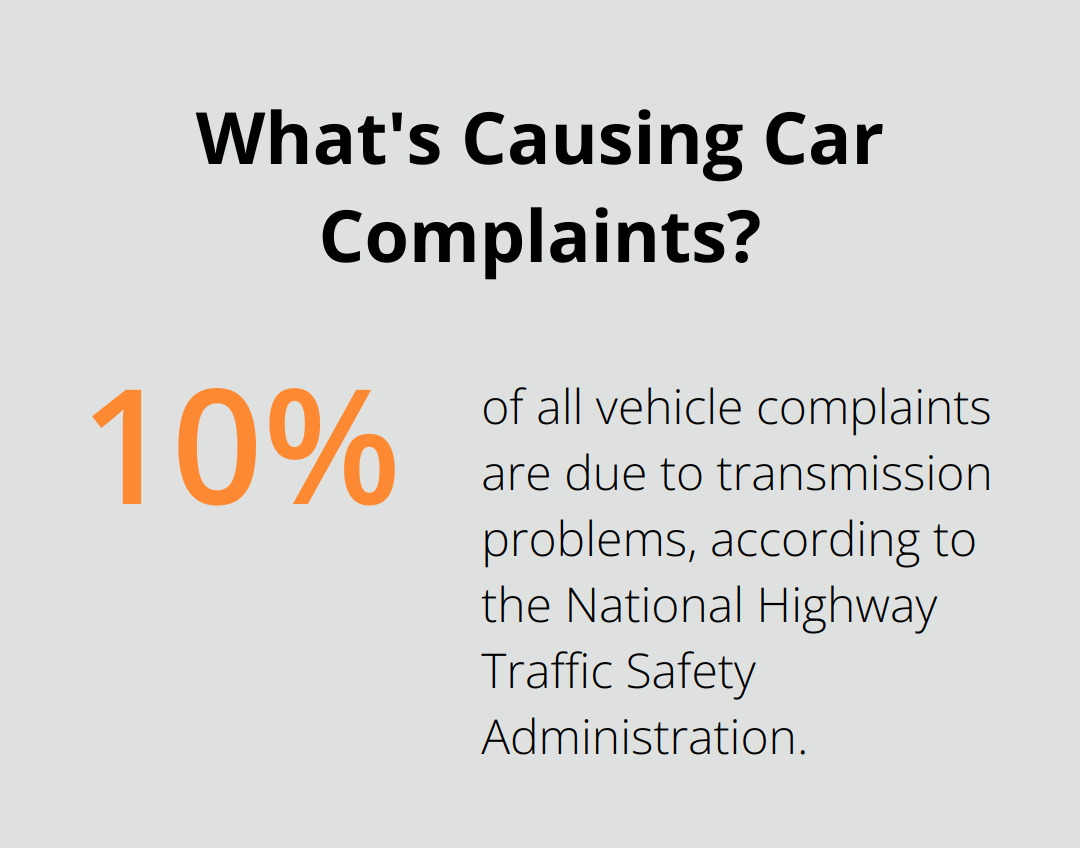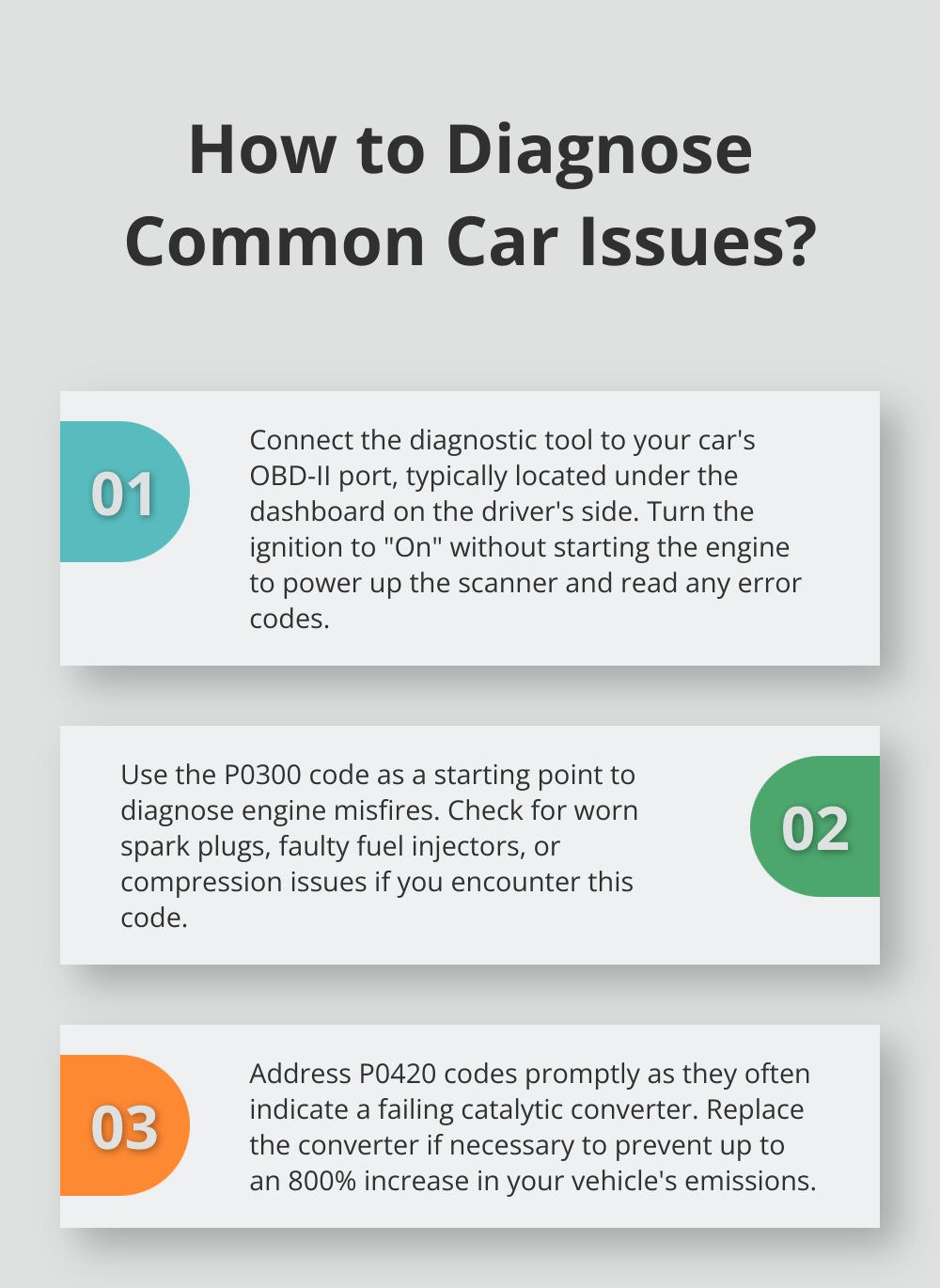At Dallian Auto Accessories, we know that car diagnostic tools are essential for modern vehicle maintenance. These devices can save you time, money, and frustration by quickly identifying issues in your car’s systems.
In this guide, we’ll show you how to use a car diagnostic tool effectively, from connecting it to your vehicle to interpreting the results. Whether you’re a DIY enthusiast or just want to understand your car better, mastering this tool will give you valuable insights into your vehicle’s health.
Car diagnostic tools are devices that identify issues in your vehicle’s systems. The most common type is the OBD-II scanner, which connects to your car’s onboard diagnostics port. On-board diagnostics (OBD) refers to the automotive electronic system that provides vehicle self-diagnosis and reporting capabilities for repair technicians. These scanners range from basic code readers to advanced professional-grade scanners. Basic code readers suit DIY enthusiasts who want to understand why their check engine light is on. Professional-grade scanners offer more comprehensive diagnostics and can read manufacturer-specific codes.
When you connect a diagnostic tool to your vehicle, it communicates with the car’s computer systems. These systems monitor various components and sensors throughout your vehicle. If a problem occurs, the car’s computer generates a diagnostic trouble code (DTC). DTCs, also referred to as engine fault codes, are used to identify and diagnose malfunctions in a vehicle or piece of heavy equipment. Your diagnostic tool reads these codes and translates them into understandable information about the issue.
Using a car diagnostic tool saves you time and money. Instead of taking your car to a mechanic for every warning light, you can quickly check the issue yourself. This knowledge allows you to make informed decisions about repairs. For example, you might replace a simple oxygen sensor at home (saving on labor costs).

Regular use of diagnostic tools prevents small issues from becoming major problems. You can avoid costly repairs by addressing issues early.
When selecting a diagnostic tool, consider your skill level and needs. Basic code readers work well for occasional use, while advanced scanners suit those who frequently work on cars. Look for features like:
While diagnostic tools provide valuable information, they have limitations. They can’t always pinpoint the exact cause of a problem, especially for complex issues. In some cases, you might need additional diagnostic steps or professional help to fully resolve an issue.
As we move forward, let’s explore how to connect and use these diagnostic tools effectively to get the most out of your vehicle maintenance routine.
The first step is to locate your vehicle’s OBD-II port. This port is typically found under the dashboard on the driver’s side. In some cars, it might be hidden behind a small panel or cover. If you can’t find it, consult your vehicle’s manual. The port looks like a trapezoid-shaped female connector with 16 pins.
Once you’ve found the port, it’s time to connect your diagnostic tool. Follow these steps:
After connecting, your scanner will communicate with your car’s onboard computer. If there are any issues, it will display Diagnostic Trouble Codes (DTCs). These codes usually consist of a letter followed by four numbers (e.g., P0300 indicates a random/multiple cylinder misfire detected).

To interpret these codes, you can refer to your scanner’s manual or look them up online. Many scanners come with built-in code definitions, which makes interpretation easier.
While DTCs point to specific issues, they don’t always tell the whole story. A code might indicate a faulty sensor, but the real problem could be a loose wire. Use the codes as a starting point for further investigation.
It’s important to note that some issues might require professional diagnosis. Complex problems often need additional diagnostic steps or specialized knowledge to fully resolve.
After you address the issue, use your scanner to clear the codes. This will reset your check engine light. If the light comes back on, you know there’s still a problem that needs attention.
Regular use of a car diagnostic tool can help you catch issues early (potentially saving you from costly repairs down the line). With practice, you’ll become more comfortable using this valuable tool to keep your vehicle in top shape.
Now that you know how to connect and use a diagnostic tool, let’s explore some common issues these tools can detect in various vehicle systems.
Diagnostic tools identify a wide range of engine issues. These problems span from minor hiccups to major malfunctions. A P0300 code often indicates engine misfires, which could result from worn spark plugs, faulty fuel injectors, or compression issues. A P0171 code might suggest a lean fuel mixture, potentially due to a vacuum leak or a malfunctioning mass airflow sensor.

Oxygen sensor failures trigger check engine lights most frequently. According to CarMD’s data, cars less than 3 years old made up fewer than 1% of all check engine light incidents. Replacing a faulty oxygen sensor promptly can improve fuel efficiency, as a failing sensor can result in lower fuel economy and higher emissions.
Transmission problems can lead to costly repairs if left unchecked. Diagnostic tools detect issues like slipping gears, solenoid failures, or low fluid levels. A P0700 code serves as a general transmission fault indicator, while more specific codes like P0730 might point to incorrect gear ratios.
The National Highway Traffic Safety Administration reports that transmission problems account for about 10% of all vehicle complaints. Early detection through diagnostic tools prevents minor issues from escalating into major repairs.
Environmental regulations increase focus on emissions system faults. Diagnostic tools identify issues with catalytic converters, exhaust gas recirculation (EGR) systems, and evaporative emission control (EVAP) systems.
A common code, P0420, often indicates a failing catalytic converter. The EPA estimates that a faulty catalytic converter can increase a vehicle’s emissions by up to 800% (an alarming figure for environmentally conscious drivers).
Diagnostic tools excel at pinpointing electrical system issues. These tools detect problems with the battery, alternator, starter motor, and various sensors throughout the vehicle. For instance, a P0562 code might indicate a low system voltage, potentially stemming from a failing alternator or a weak battery.
Modern vehicles rely heavily on complex electrical systems. The ability to quickly diagnose these issues saves time and prevents potential breakdowns.
Advanced diagnostic tools also analyze brake systems. They detect issues with anti-lock braking systems (ABS), electronic stability control, and brake pad wear sensors. A C0035 code, for example, might indicate a problem with the left front wheel speed sensor, which could affect ABS performance.
Early detection of brake issues ensures optimal safety and performance. It also helps prevent more extensive (and expensive) repairs down the line.
Car diagnostic tools have become essential for modern vehicle maintenance. These devices allow car owners to identify and address issues quickly, which can save time and money on repairs. Regular vehicle check-ups with diagnostic tools help maintain optimal performance and longevity.

We recommend you scan your vehicle at least once a month or when you notice unusual behavior or warning lights. This proactive approach to maintenance can help you detect potential issues early. At Dallian Auto Accessories, we offer a range of car diagnostic tools to suit various needs and skill levels.
Car diagnostic tools provide valuable information, but they work best when used with regular maintenance and professional inspections. You’ll equip yourself better to keep your car running smoothly for years to come if you incorporate these tools into your vehicle care routine. Our selection includes everything from basic code readers to advanced scanners, ensuring you find the right tool for your vehicle maintenance routine.
Leave a comment